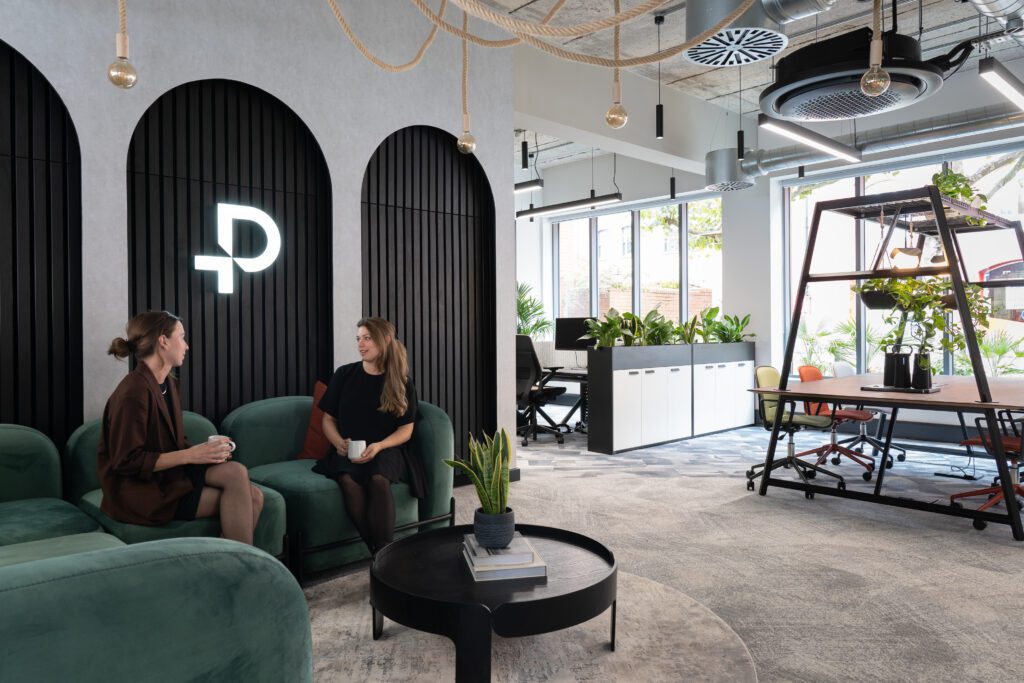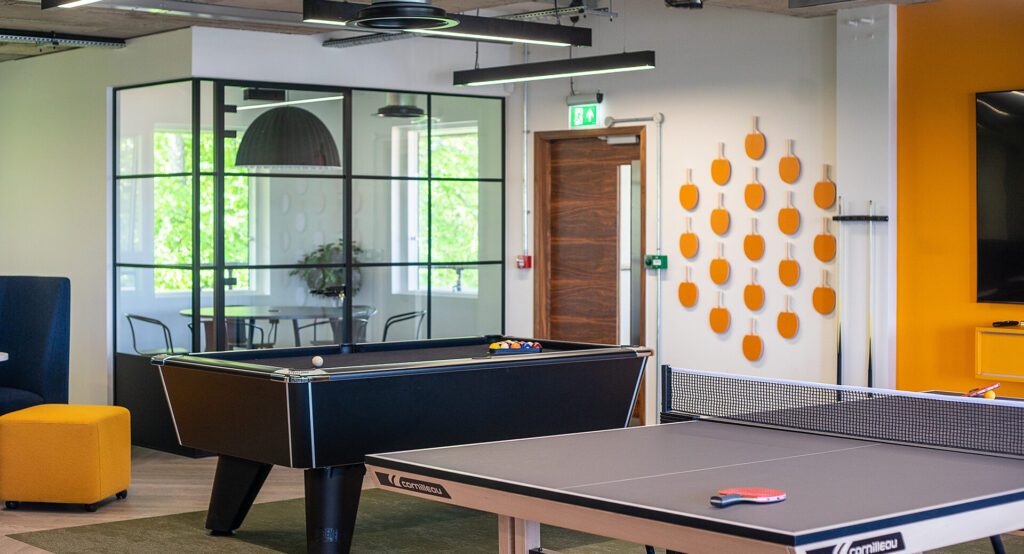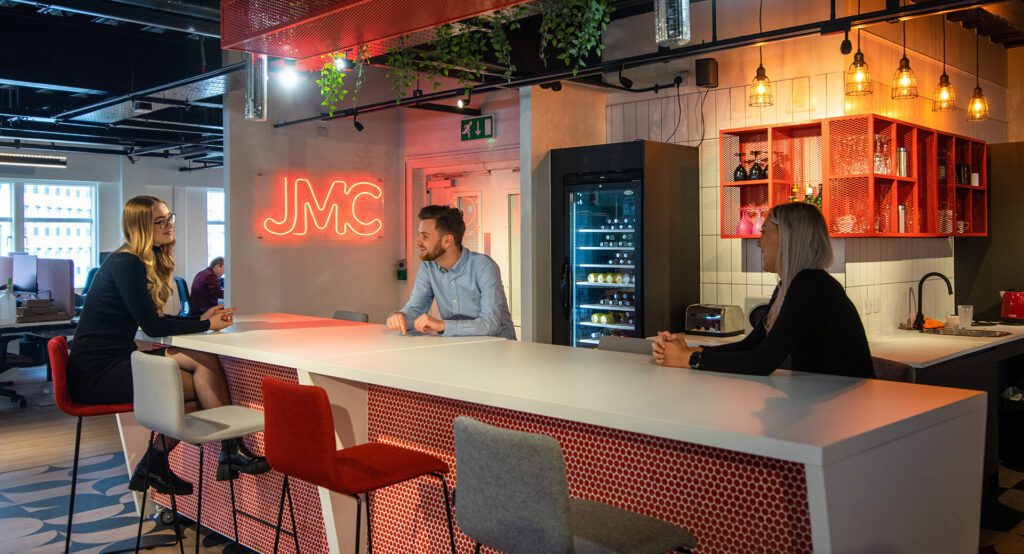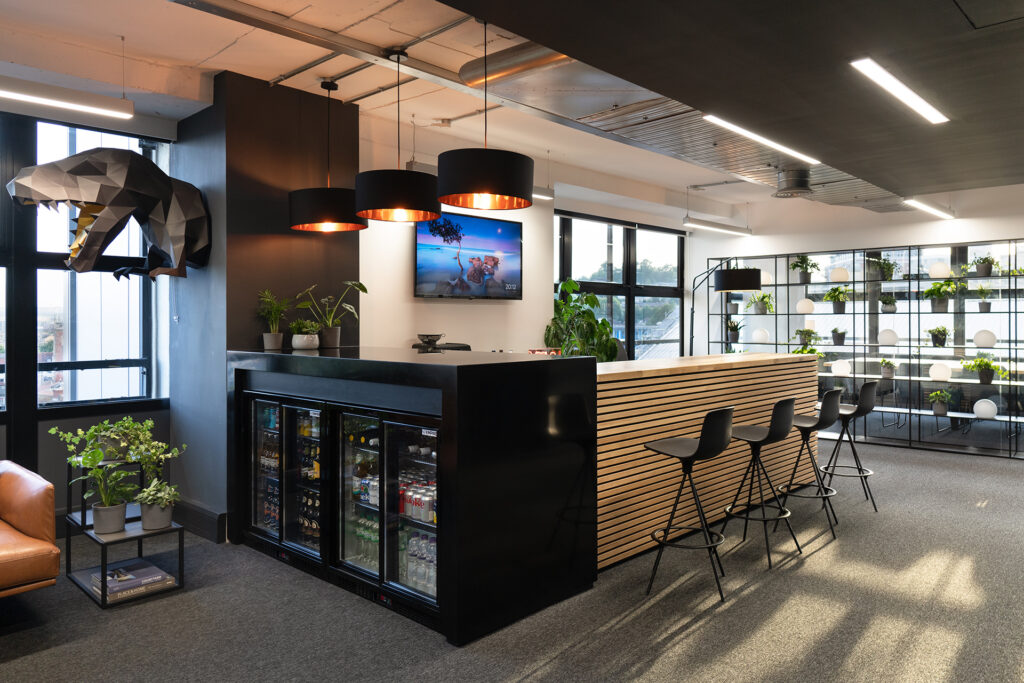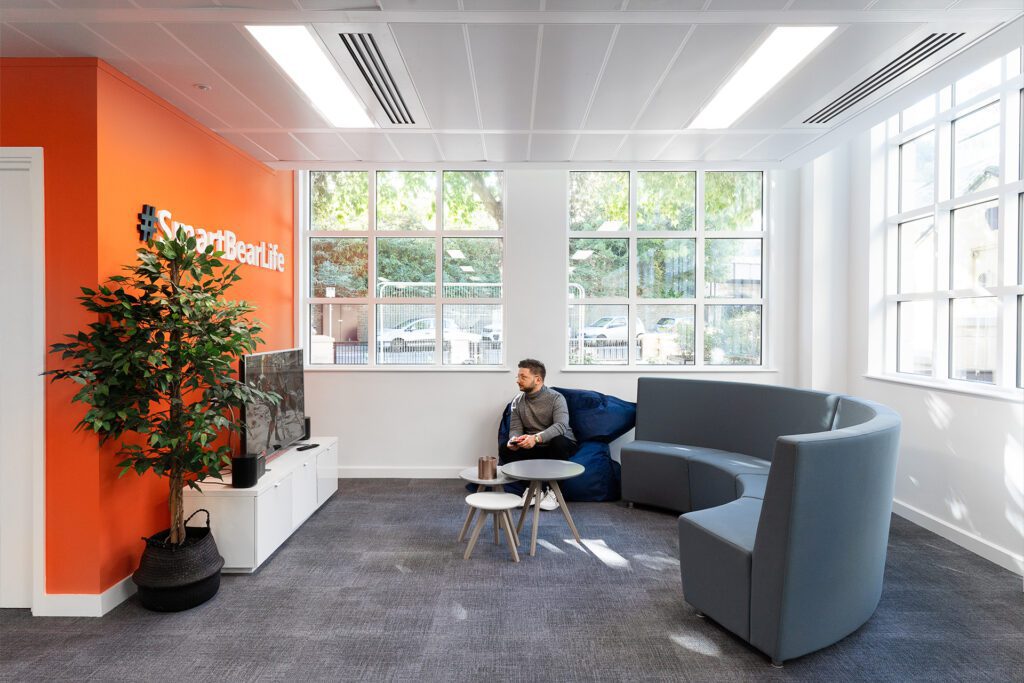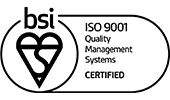The rise in hybrid working has put more emphasis on the importance of including multi-functioning social spaces within the workplace.
We build connections through social infrastructure, which is made up of physical places within a community where people gather and connect, to build trust and foster creativity.
Office social space holds an essential role within the infrastructure of a business. The right design has the power to create a hive of creativity, collaboration, and more effective team interaction.
Social space can be used for everything from relaxing and building networks, to taking a casual, impromptu meeting with clients or colleagues.
In this blog, we’ll delve into the benefits of office social spaces thanks to insights uncovered from leading furniture manufacturer Steelcase…
Why you should add social spaces to your office
Despite what some may think, the addition of social spaces where people can invest time with one another, is closely linked to increased productivity.
According to Dr. Tracy Brower, Sociologist: “The sense of inclusion, comfort and belonging in the form of social time is far from superficial.”
Office social space will boost employee well-being and help shape relationships that will enhance efficiency, cross-team collaboration, and communication among colleagues.
Regular interaction with coworkers makes people feel part of the fabric of a company. It gives people a safety net that allows people the confidence to take risks, be creative and feel supported.
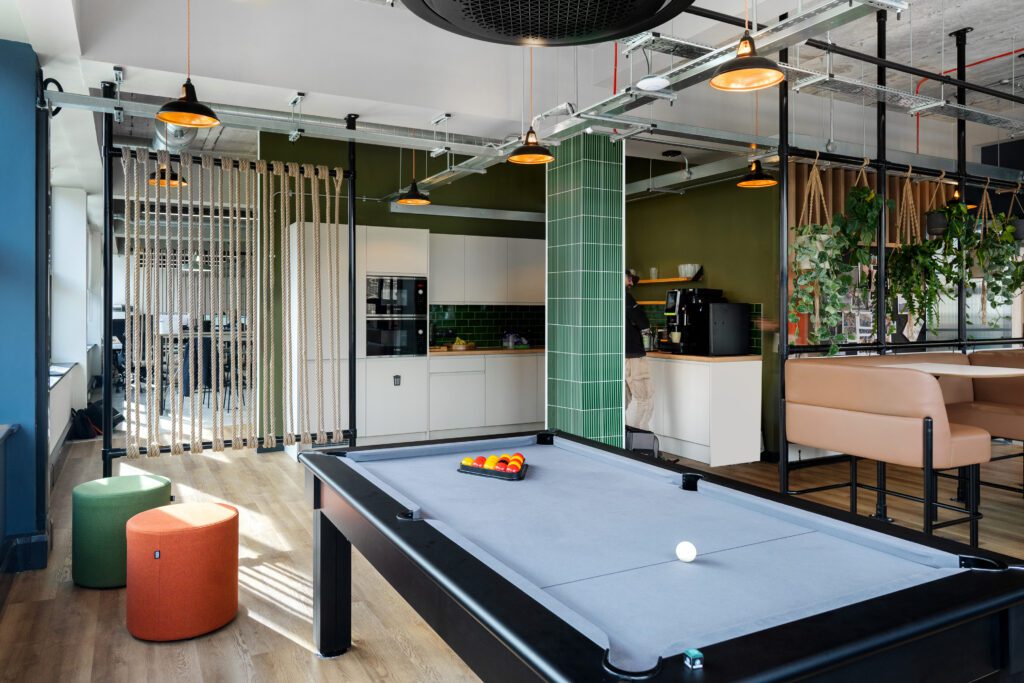
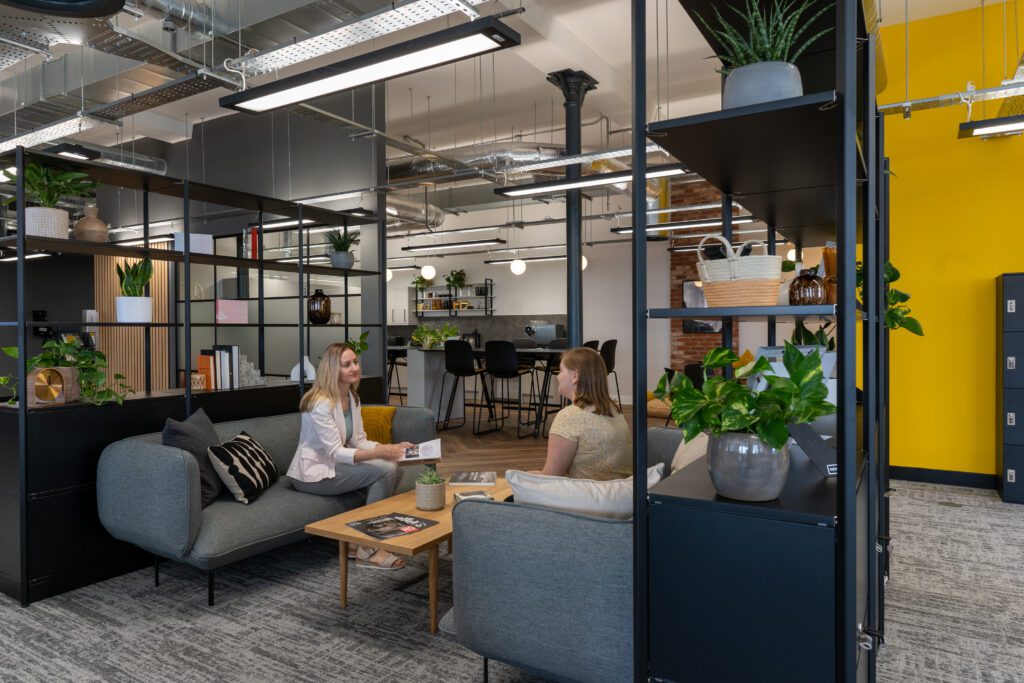
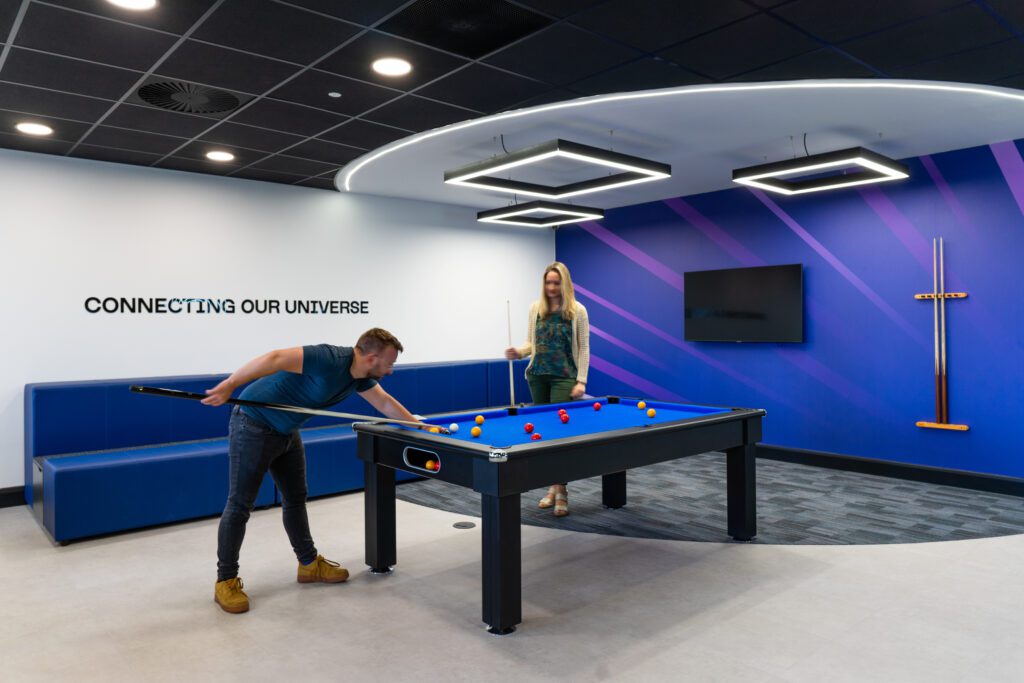
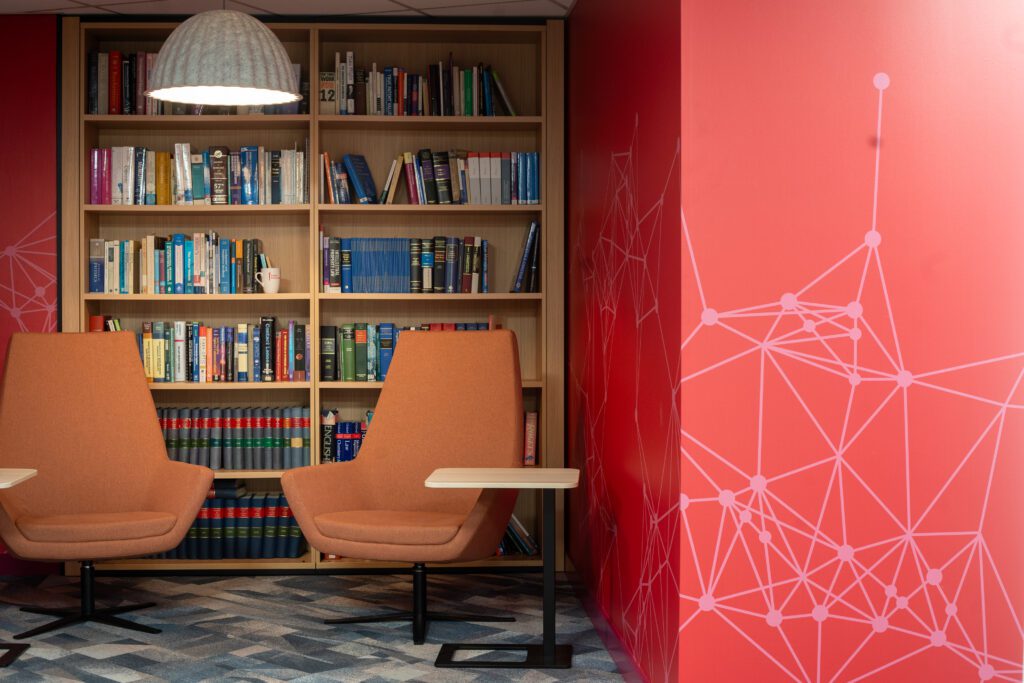

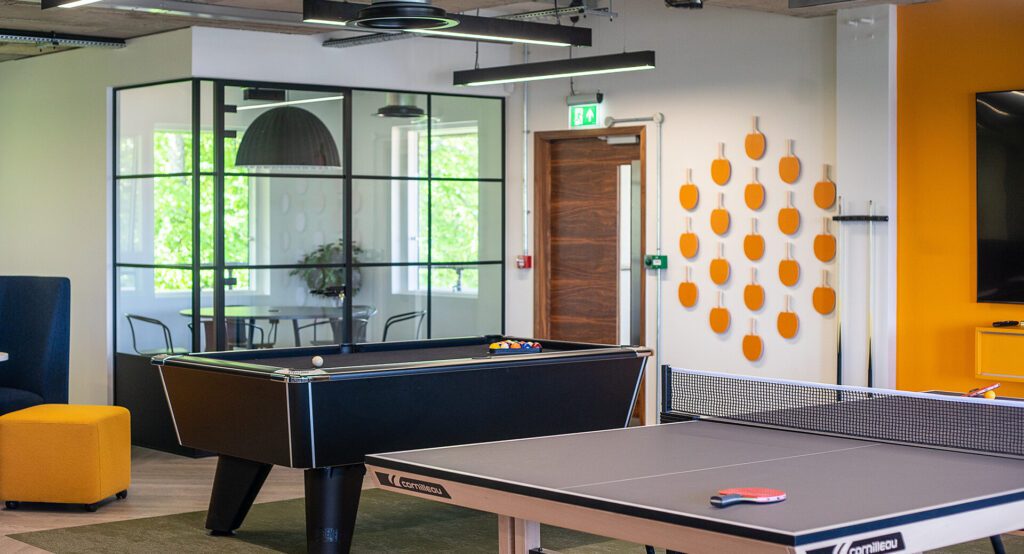
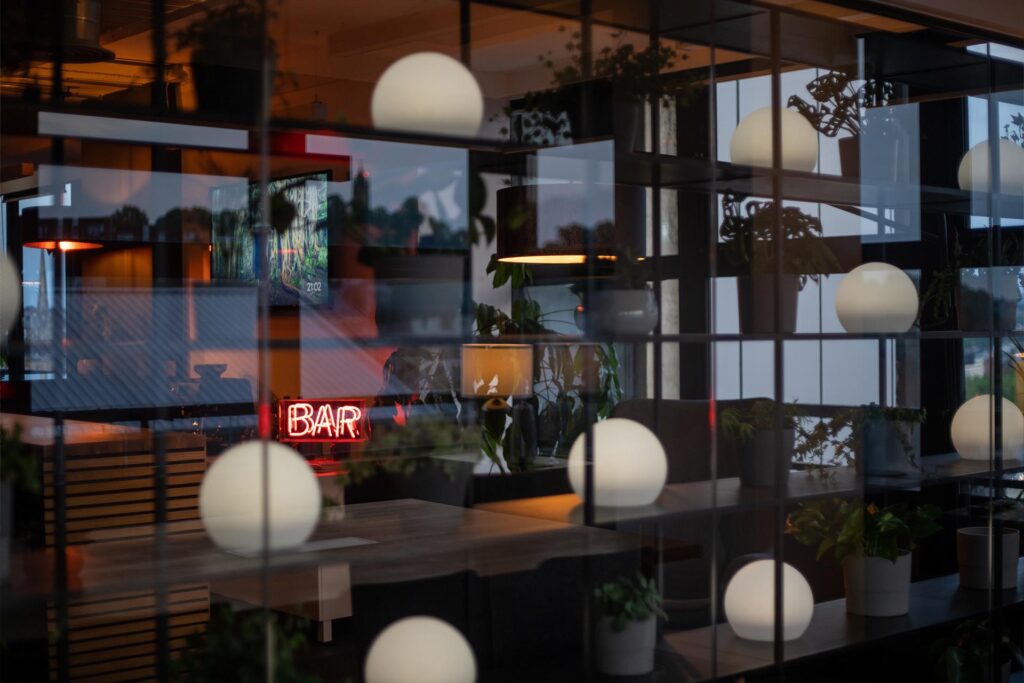
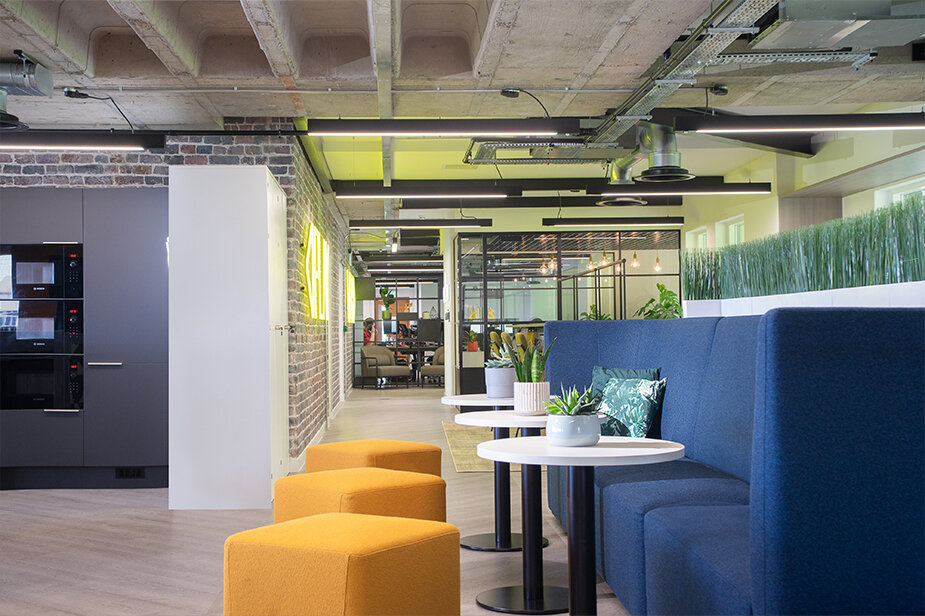

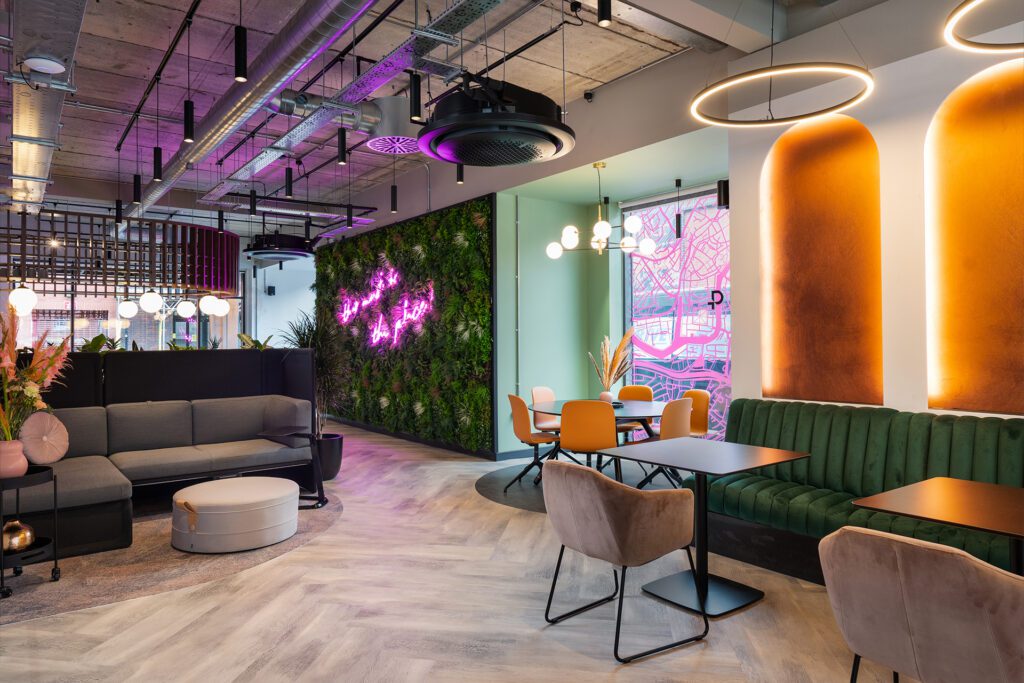
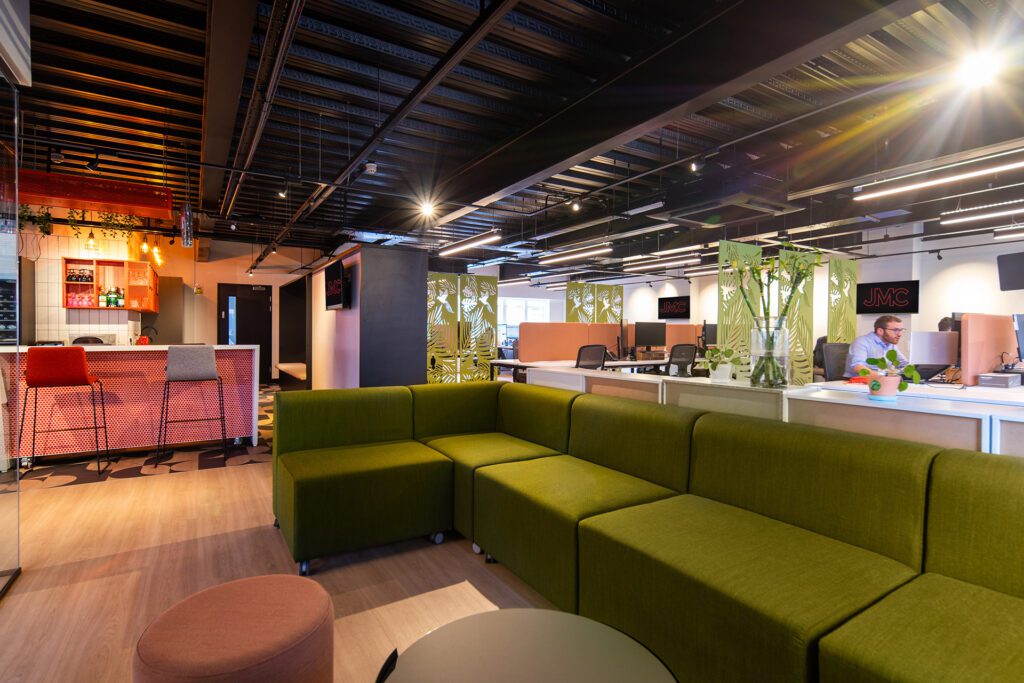
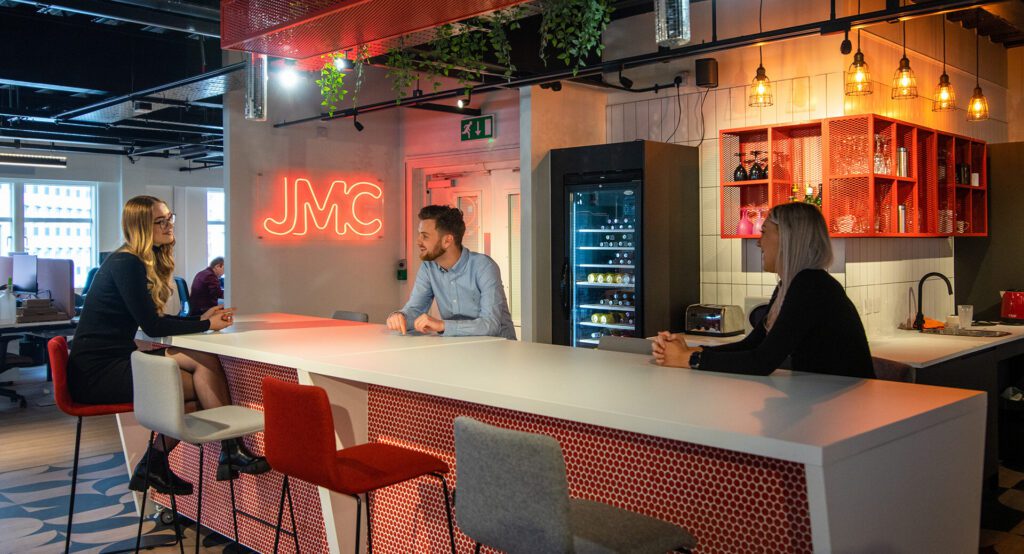
The benefits of social space to a company
Workplace design should invite people in, give them a destination and a way to comfortably transition into their workday.
People seek variety and vitality, and a well-designed social space will promote work life balance, help retain talent and attract newcomers, with 25% of Gen Z stating that socialising is a big reason they show up to work, ranking it higher than access to career development advice and learning opportunities.
Not only does inclusion of social spaces foster a thriving team culture, but social learning too; with 65% of what employees learning coming from coworkers and 15% from managers according to Steelcase’s latest research. Learning will happen more naturally when employees are engaged.
Top reasons why people come to the office
Within Steelcase’s global employee research project, they identified the top reasons why people come to the office.
- Collaboration
- Focus work
- Access to tools and technology
- Sense of belonging
- Feeling shared purpose
- Connect with leaders
- Socialise and have fun
It’s clear that people come to the office for a purpose – to get work done, make connections, and build networks. Large or small, high performing and multi-purpose social spaces within a working environment will help pull people back to the office.
Office social spaces by Paramount
If you’re looking for some inspiration for social space within your office fit out, don’t worry we’ve got you covered!
We’ve got plenty of examples to show you, including our very own award-winning Bristol office at Dock House, which is the true definition of a social hub and a place where we all want to be. Take a look…
Looking for inspiration for your office social space? Speak to us!
Read another blog from Steelcase, here.

